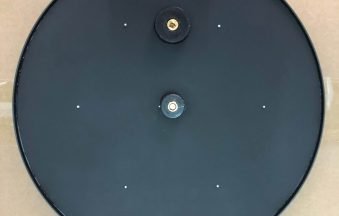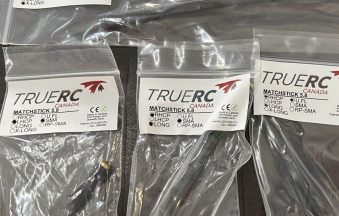Need help? Send mail:
support@dolphinrc.com
Finding the Best Mini FPV Drone for you
For nearly three years, I’ve been completely immersed in the world of FPV, and I can tell you, there’s nothing quite like the feeling of putting on a pair of goggles and seeing the world from a bird’s-eye view.
If you’re reading this, you’ve probably typed “mini FPV drone” into a search bar more times than you can count. I’ve been there. You’re looking for that perfect blend of performance, portability, and price. But the more you search, the more you find yourself drowning in a sea of technical jargon, conflicting reviews, and an overwhelming number of options. It’s frustrating, I know. You’re looking for a clear path, a trustworthy guide to help you navigate the exciting, but often confusing, world of mini FPV drones.
That’s why I’m writing this. I want to share my experience with you, to cut through the noise and give you the real, unfiltered truth about what makes a great mini FPV drone. I’m going to walk you through everything you need to know, from understanding the basics to in-depth reviews of some of the best drones on the market. My goal is to empower you with the knowledge and confidence to choose the perfect drone mini FPV for your needs, so you can spend less time searching and more time flying.
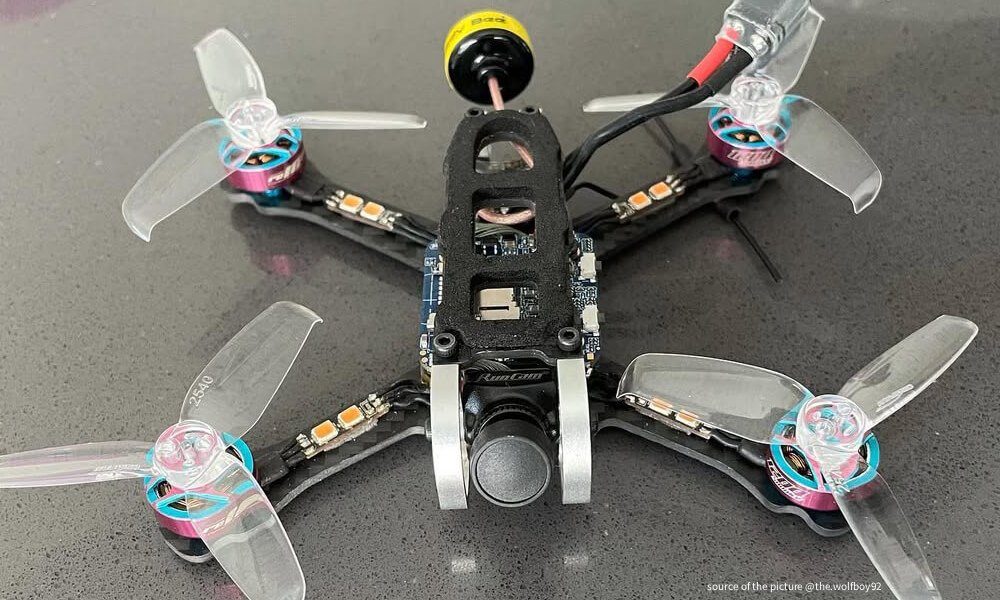
Table of Contents
ToggleWhat Exactly is a Mini FPV Drone?
Before we dive into the nitty-gritty of choosing the right drone, let’s take a step back and appreciate the magic of the FPV mini drone. These aren’t your typical camera drones that you see hovering gracefully to capture cinematic shots. Oh no, these are something else entirely. A drone FPV mini is a small, agile, and incredibly fast quadcopter designed for one thing: performance.
The “FPV” stands for First-Person View. This means you see what the drone sees, in real-time, through a pair of FPV goggles. It’s the closest thing you can get to actually flying. The experience is visceral, immersive, and adrenaline-pumping. When I first put on a pair of goggles, I was hooked. The world opened up in a way I had never imagined. I could chase my friends through the park, dive down the side of a building (safely, of course!), and explore my surroundings from a completely new perspective.
But it’s not just about the thrill. Mini FPV drones are also incredibly versatile. They are small enough to fly indoors, making them perfect for practicing on a rainy day. Yet, they are powerful enough to handle a bit of wind and perform impressive aerobatic maneuvers outdoors. This combination of portability and performance is what makes the mini fpv drone kit so appealing.
How to Choose the Best Mini FPV Drone
Choosing your first mini drone FPV can be a daunting task. There are so many factors to consider, and it’s easy to get lost in the technical specifications. To help you out, I’ve put together my personal checklist of the things I look for when choosing a new drone.
- Flight System (Analog vs. Digital): Analog FPV gear (typically 25–200mW VTX with 700TVL camera) is cheaper and has near-zero lag. Digital systems (720p HDZero, DJI O4 lite, or Walksnail Avatar) give crisp video but add cost/weight and can freeze in long-range flight. For a mini drone FPV kit, analog is the go-to for most budgets. Only pilots wanting the absolute best image or to future-proof would lean digital. Personally, my trusted micro drones use 25–100mW analog video – enough for backyard flying but with very quick response.
- Battery and Flight Time: Mini drones usually use 1S (3.8V) or 2S (7.6V) LiPo batteries around 300–500mAh. A 300mAh 1S pack might give ~3 minutes on a micro whoop, whereas a 500mAh 2S can stretch to 4–5 minutes (at the cost of more power/weight). Expect 3–5 minutes out of most minis. For example, a lightweight “toy” quad like the Force1 U45 Raven (similar to Eachine’s entry-level models) only managed about 7 minutes per 500mAh battery. In practice, I usually fly in short bursts or do battery swaps. When I test a new mini, I note the pack capacity and clock the actual flight time; this often disqualifies models that promise too much.
- Size and Weight: The mini category spans micro whoops (37–75mm wheelbase) up to 2″ quads (80–100mm). A 65mm “tiny whoop” is ultra-small and flyable indoors. Larger 2″ quads handle wind better and allow 2S batteries. I find a 75–85mm frame (like BetaFPV Meteor75) to be an excellent middle ground. Very lightweight builds (~20g without battery) are so safe that even big crashes into walls rarely break them. Durability vs. agility trade-off: I prefer a slightly beefier 80–100mm frame (with ducted propeller guards if possible) for sturdiness, unless I specifically need an ultra-tiny cinewhoop.
- Build vs. RTF Kit: If you’re not soldering-savvy, a Ready-To-Fly (RTF) kit is a lifesaver – everything comes pre-built with a controller, goggles, batteries, charger, and drone. Kits like the BetaFPV Cetus or EMAX Tinyhawk 3 include the controller and goggles out of the box. I often recommend an RTF kit for newbies because it eliminates setup headaches. For example, the Tinyhawk III Plus kit comes with EMAX’s 4.3″ FPV goggles and a radio transmitter; after charging, you “just plug and play”. The downside is cost (several hundred dollars for a full kit) and usually they’re analog. If you can solder and tinker, a mini FPV drone build using separate components (frame, FC/ESC board, motors, camera, VTX, etc.) lets you customize but requires more knowledge. One cool build I did: a 2″ freestyle mini with 1103 motors and an F4 flight controller, which flew like a charm, but tuning Betaflight was an afternoon task. For most users, starting with a kit and later building custom rigs is a good learning path.
- Accessories and Replacement Parts: Check that replacement props, batteries, frames, and parts are easy to get. Mini quads crash a lot! I learned this the hard way: a beginner review of the Cetus kit notes its frame “breaks incredibly easily”. On the plus side, BetaFPV sold spares for Cetus, and I could easily swap in a new frame to keep flying. My own tip: buy extra batteries and props right away. A good mini should have readily available spares (e.g. BetaFPV, Happymodel, and Eachine have plenty, whereas obscure no-name quads might not).
- Regulations and Weight: Most mini FPV drones weigh well under 250g. In many countries (like the US with Part 107 and EU rules), sub-250g means no registration required. So that’s a huge advantage – you can fly legally in many places with no paperwork. If your mini kit is over 250g, be aware of local rules. For example, the brushless BetaFPV Cetus X kit (with its extra battery and frame) weighs about 81g, well below 250g, so it’s always legal to fly without nagging requirements.
In summary, my checklist for a mini FPV drone is: appropriate size (based on where I’ll fly), analog or digital (for me, analog for price/performance), decent battery life (check mAh), robust frame (prop guards help), and the right accessories (batteries, charger, goggles). If these boxes are checked, I know I’ll enjoy flying.
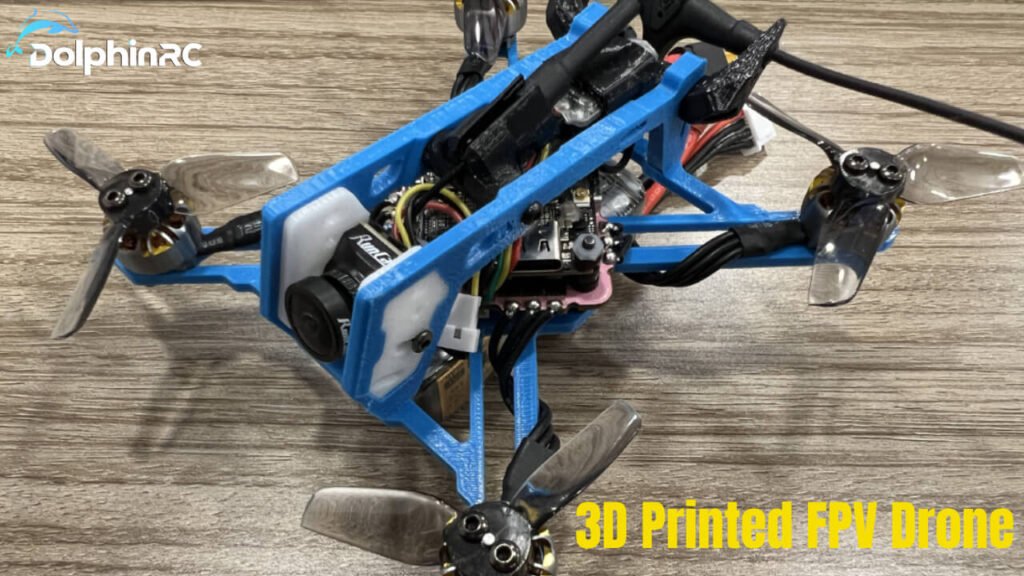
My Top Picks for the Best Mini FPV Drone
Now for the fun part. I’ve had the pleasure of flying a lot of different mini FPV drones over the years, and I’ve narrowed down my top picks for you. I’ve chosen these drones based on their performance, durability, and overall value for money.
Happymodel Mobula7
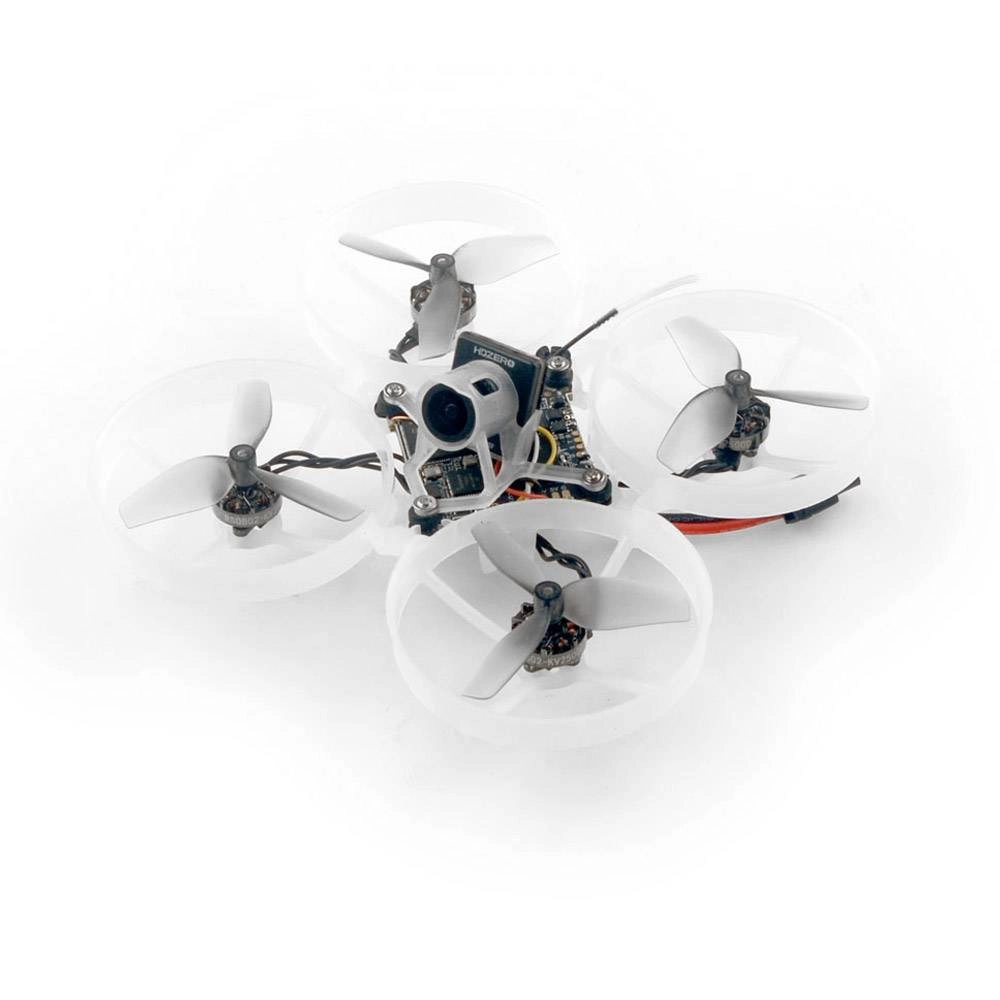
If you’re looking for a drone that you can fly just about anywhere, the Happymodel Mobula7 is a fantastic choice. This is a “tiny whoop” style drone, which means it has ducted propellers that make it incredibly safe to fly indoors. But don’t let its small size fool you, this little drone packs a punch.
My First Impressions: When I first got my hands on the Mobula7, I was amazed at how light it was. It’s so small that you can easily carry it in your pocket. The build quality is excellent, with a durable plastic frame that can take a beating.
Flight Performance: The Mobula7 is an absolute blast to fly. It’s incredibly agile and responsive, and it’s perfect for practicing your skills in a small space. I’ve spent countless hours flying this drone around my house, chasing my cat (she loves it, I swear), and practicing my acro moves. It’s also surprisingly capable outdoors on a calm day.
Camera and Video Quality: The FPV camera on the Mobula7 is decent for its size. It’s not going to win any awards for image quality, but it’s more than good enough for flying around and having fun. The video signal is also surprisingly stable, even when flying behind obstacles.
Pros:
- Incredibly fun and easy to fly
- Very durable and safe for indoor flying
- Affordable price point
- Great for beginners and experienced pilots alike
Cons:
- Limited flight time (around 3-4 minutes per battery)
- Not suitable for windy conditions
Who is this drone for? The Happymodel Mobula7 is the perfect best mini fpv drone for anyone who wants to get into FPV without breaking the bank. It’s also a great choice for experienced pilots who want a fun little drone to fly around the house.
BetaFPV Cetus (Analog, RTF Kit)
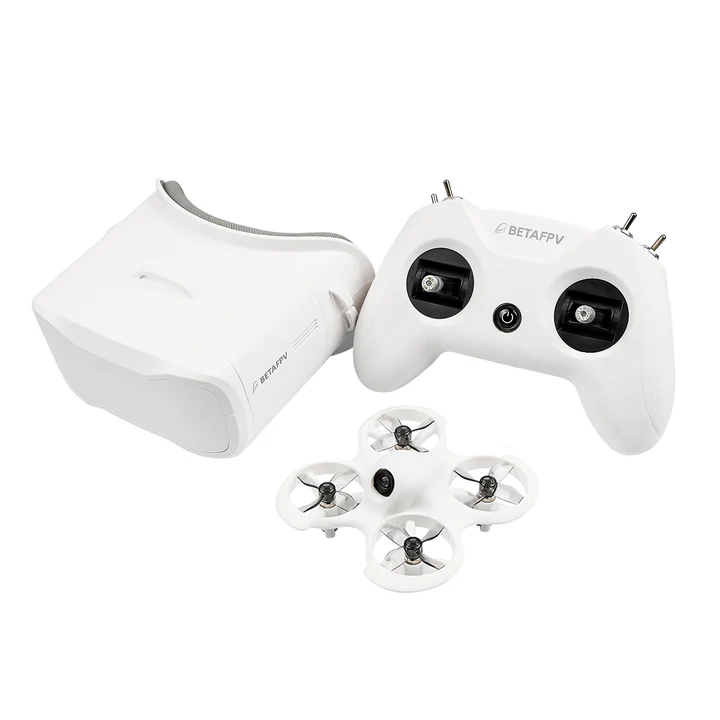
The Meteor series from BetaFPV (65mm, 75mm, 85mm frames) is another favorite of mine. These are micro brushless drones without props, giving a cinewhoop-like crash safety. For example, the Meteor65 (22.8g without battery) is ultra-light and zippy with its 0802 motors, perfect for indoor flying in tight spaces. The larger Meteor75 (28g, bigger 2″ props) handles wind a bit better and can run 2S packs for more power. Both frames are quite durable, with the motor bells partially shielded by ducts and a comfy canopy over the electronics.
Flying a Meteor75 Pro, I noticed it was extremely stable and easy to control. It’s not a racer, so don’t expect breakneck speed, but the 1103 motors on 2S give nice punch for flips (and the enhanced canopy soaks up vibrations well). The goggles feed was analog (with a 600TVL CMOS camera on the Pro), so night flights were dim. But the video latency was low. The stock rates were fairly gentle (as expected for a whoop).
Pros: Small and durable frame (can take hits). Lightweight (flips around easily). Good value (the Pro version even has a 4K-ready O3 Air Unit option for HD racing). Plenty of spare parts available. The Meteor75 Pro allows 2S flight outdoors.
Cons: Flight times around 3 minutes on 300–450mAh packs. Analog camera can be noisy in low light. The canopy and ducts limit max speed (it’s a whoop, not a full blown racer). In one test, a Meteor75 struggled a bit in ~15mph wind.
These Meteors are great if you’re looking for a tiny freestyle drone to fly around the house or backyard. They handle beautifully in small spaces. One caveat: the original Meteor65 frames had a BT2.0 battery connector which is kind of fragile; BetaFPV addressed this later. I often swap in the Meteor95 (with more power) for outdoor tricks, but it’s bulkier. Overall, the Meteor line represents best mini fpv drones for pilots who want a tuned brushless whoop without too many bells and whistles.
GEPRC T-Cube 18 (Analog/HD Nano Drone)
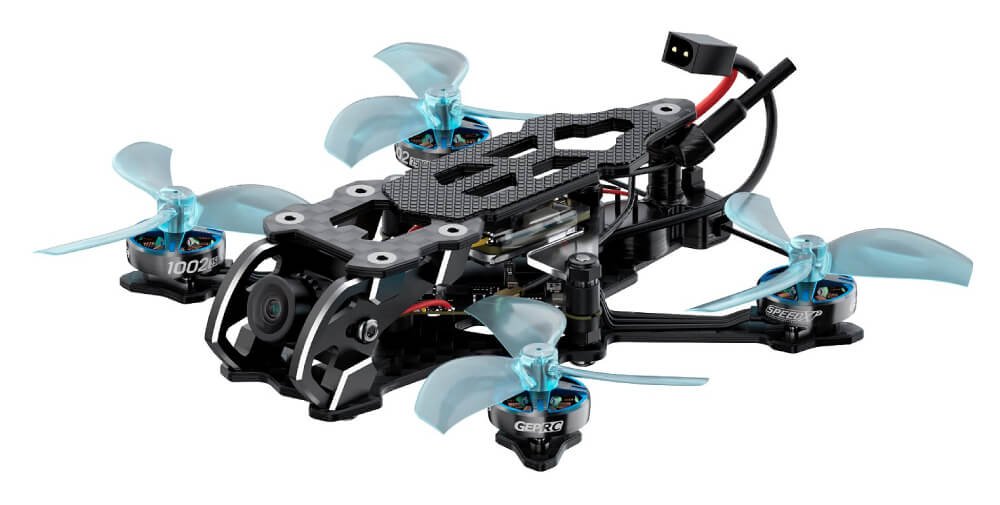
The GEPRC T-Cube 18 is not a “whoop” but rather an extremely tiny freestyle micro (1002 motors on a 48mm X frame). I borrowed one from a friend and was amazed by how tiny and light it was – only 38g (1S analog version). Despite the small stature, it flies decently well. I tried both versions: the 1S analog (25mW) and the 2S HDZero variant.
The 1S analog T-Cube felt zippy enough for indoor gaps and had the typical analog FPV greyscale view. According to one test report, “the analog model … [is] wholeheartedly endorsed” for its performance. It’s so light that even when I upgraded it with a tiny DVR camera, the extra weight barely affected flight (it just bumped to 42g).
The 2S HDZero T-Cube, however, I found to be finicky. Out of curiosity, I tried strapping a Caddx Vista HD unit on it (the site mentioned it was “within reason” to do so) – the flight did work but was noticeably less stable. The other reviewer of the T-Cube 18 noted that the HDZero version “might not work effectively in freestyle” without further tuning. In my hands, I agreed: the HD system froze occasionally and the little quad struggled with the heavier battery+HD gear.
Pros: Insanely compact and lightweight (a novelty that flies). Fun for precision indoor flying. The analog model is surprisingly resilient for its size.
Cons: Very short range (25mW), tiny propellers easily stall. Battery life is brief. HD version needs setup and isn’t bulletproof. Non-intuitive to solder or modify due to size.
Flying the T-Cube 18 was a unique experience; it felt like zooming a toy helicopter with FPV goggles. I wouldn’t call it the best mini fpv drone for everyone (it’s pretty niche), but as a novelty or for very small-space flights it’s awesome. And it carries the GEPRC pedigree (a well-respected race frame maker), so you know it was engineered decently. If you’re curious how a 48mm quad flies, try one – but be prepared for very short flights and the challenge of its size.
Building Your Own Mini FPV Drone
While there are some fantastic ready-to-fly mini fpv drones on the market, there’s something incredibly satisfying about building your own. A mini fpv drone build is a rite of passage for many FPV pilots, and it’s a great way to learn about the inner workings of your drone.
A mini fpv drone kit is a great way to get started. These kits come with all the components you need to build your own drone, and they often include detailed instructions. Building your own drone can be a bit challenging, but it’s also incredibly rewarding. There’s nothing quite like the feeling of taking your own creation to the skies for the first time.
If you’re thinking about building your own fpv mini drone kit, here are a few things to keep in mind:
- Do your research: There are a lot of different components to choose from, and it’s important to do your research to make sure you’re getting the right ones for your build.
- Take your time: Don’t rush the build process. Take your time and make sure you’re doing everything correctly.
- Don’t be afraid to ask for help: The FPV community is full of helpful people who are always willing to lend a hand. If you get stuck, don’t be afraid to ask for help on a forum or social media group.
Essential Gear for Your Mini FPV Drone
Once you’ve chosen your best mini fpv drone kit, you’re going to need a few other things to get you in the air. Here’s a quick rundown of the essential gear you’ll need:
- FPV Goggles: This is how you’ll see what your drone sees. There are a lot of different FPV goggles on the market, from budget-friendly options to high-end digital systems.
- Radio Controller: This is how you’ll control your drone. Just like with goggles, there are a lot of different radio controllers to choose from. I recommend getting a radio that runs the EdgeTX or OpenTX firmware, as they are the most versatile and feature-rich.
- Batteries and Charger: You’re going to need a lot of batteries. I recommend getting at least 5-6 batteries for your drone, so you can have a decent amount of flight time. You’ll also need a good quality charger to keep your batteries in good condition.
- Tools: You’ll need a few basic tools to work on your drone, such as a set of hex drivers, a soldering iron, and a pair of wire cutters.
Final Thoughts
I hope this guide has been helpful. My goal was to share my passion for FPV with you and to give you the information you need to choose the perfect mini fpv drone. The world of FPV is an amazing place, full of excitement, adventure, and a wonderful community of like-minded people.
Whether you choose a ready-to-fly drone or decide to build your own, I can promise you that you’re in for an incredible experience. There’s nothing quite like the feeling of flying an FPV drone. It’s a feeling of freedom, a feeling of pure joy.
So what are you waiting for? Your journey into the world of mini FPV drones starts now. Get out there, get flying, and I’ll see you in the skies.
Catalogue
By using this website you agree to our Privacy Policy.



